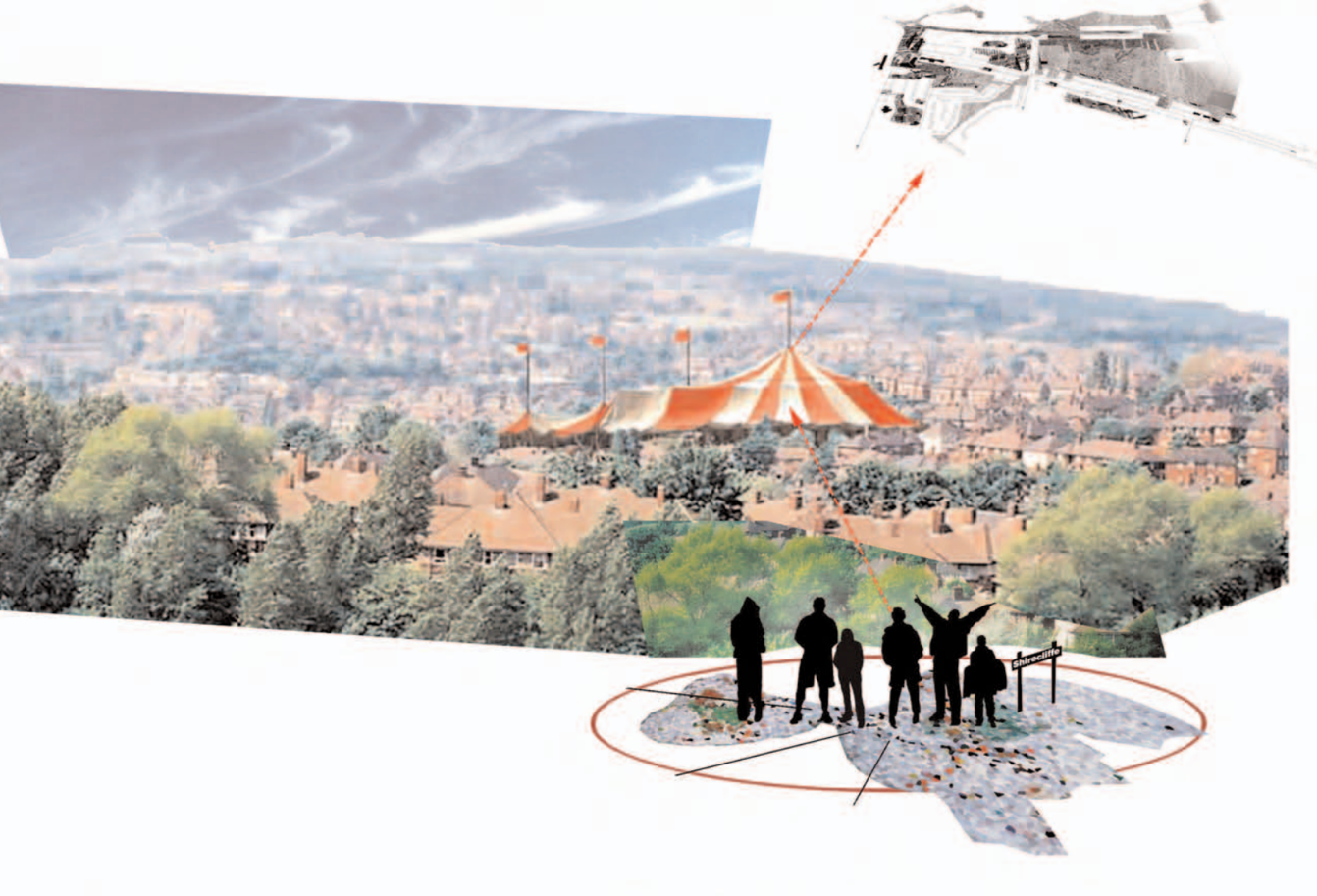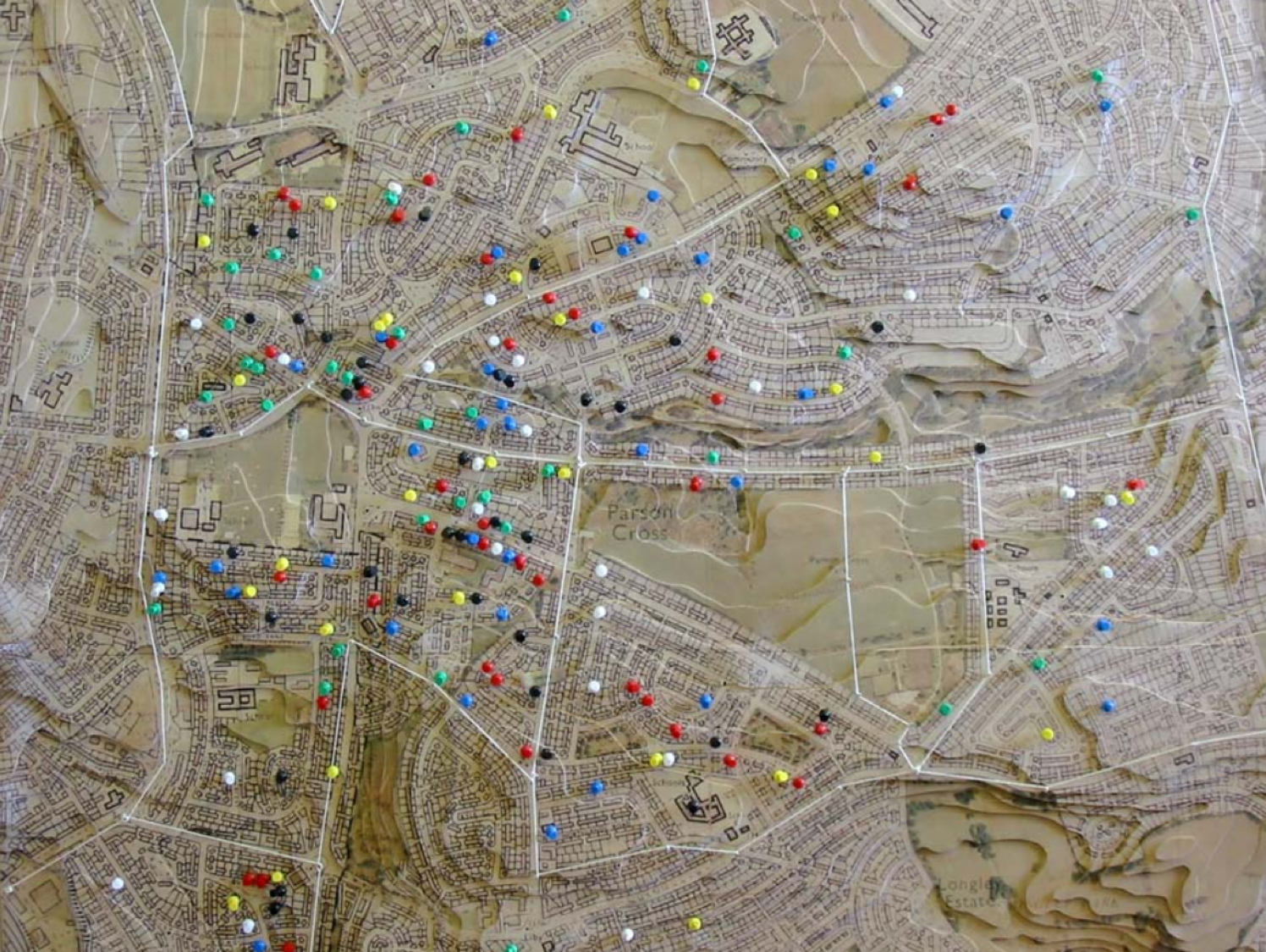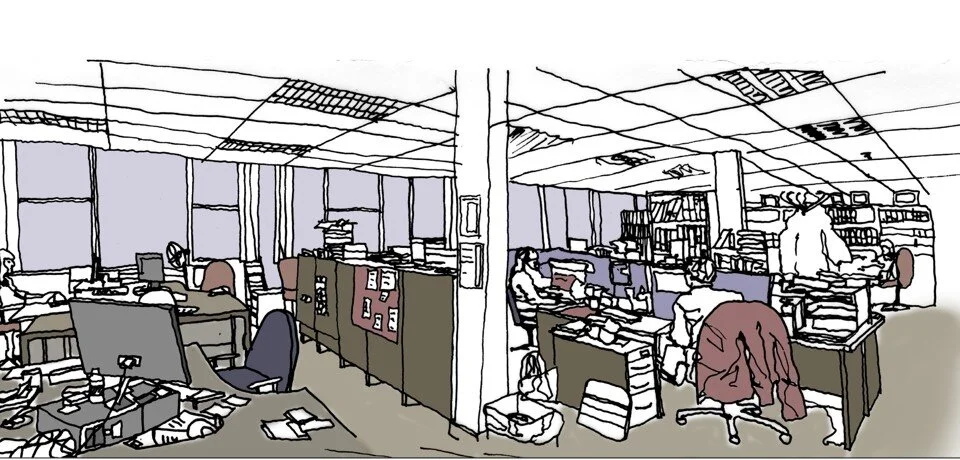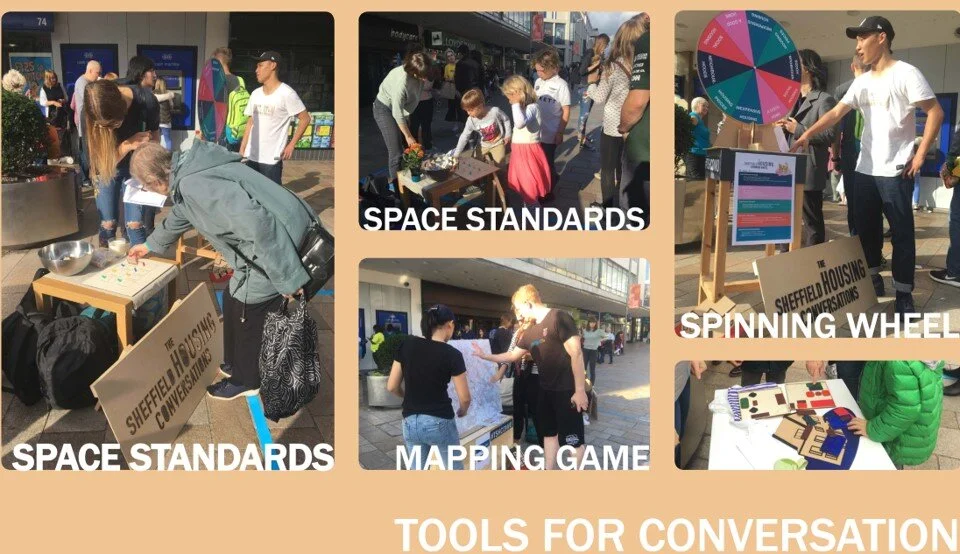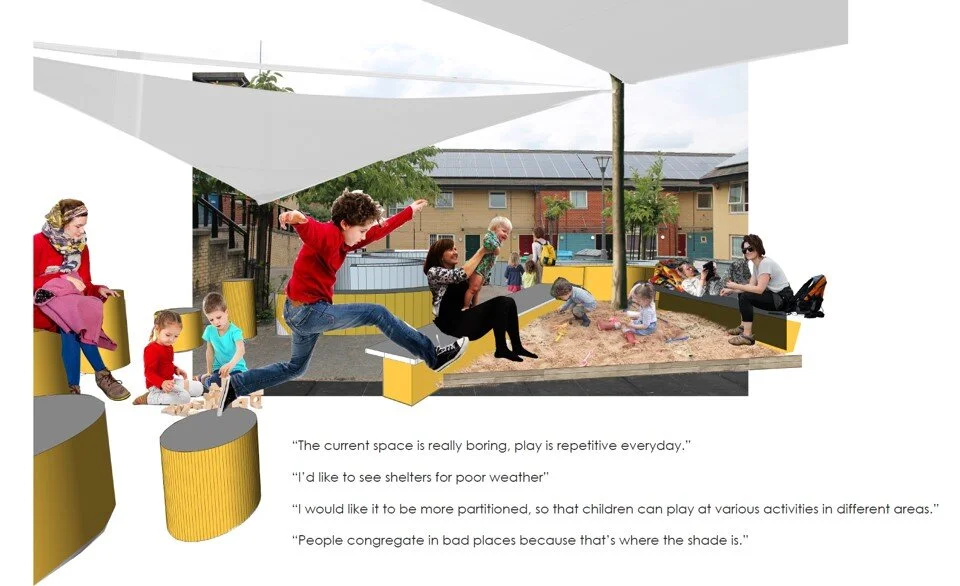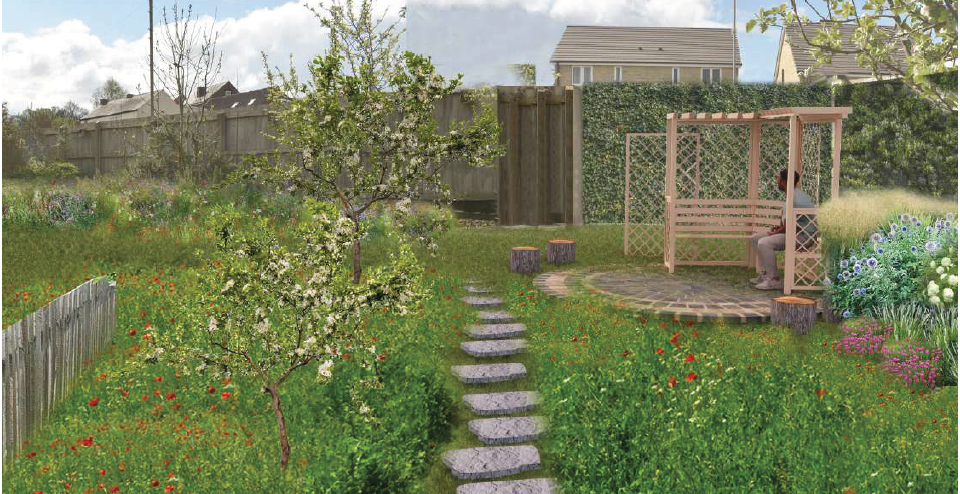21 years of Live Projects: how Sheffield’s architecture students have helped shape the city region
Celebrating 21 years of Live Projects with Sheffield's School of Architecture
Project dates: 2000-2021
Team:
University of Sheffield School of Architecture - Sam Brown, Carolyn Butterworth, Prue Chiles and Leo Care
Architecture students past and present - too many to name!
Communities across Sheffield City Region
Another batch of Live Projects - 17 in all - has just come to an end, beautifully curated and facilitated by Sam Brown from Sheffield’s School of Architecture.
Live Projects have been a key feature of training architects in Sheffield. They have also had real impact in the city and beyond. Why do they work so well?
“We believe we have been pioneers, as the century and the world changes, in developing our working practice into a democratic and participatory process of place-making, using creative engagement to understand and participate in the social and political structures in society.”
As a “serial client” (sounds somewhat sinister?), I was invited to join the panel to reflect on this year’s presentations. Sam put me on the spot and asked me what I thought the purpose of Live Projects was now. Tough question.
The experiences of the last year have highlighted the big issues of our time including social equality, racial justice and the climate and biodiversity emergencies. Young people have been particularly active and vocal in articulating these issues and demanding change. At the same time the value of local assets has been recognised: homes, green spaces, neighbourhood resources.
For me, Live Projects are a brilliant opportunity to involve young people - in this case students - to work with community organisations and showcase how local assets can be harnessed to tackle these big issues.
All of this year’s projects achieved this in myriad ways: for example, through curating and exhibiting a Bantu archive, developing neighbourhood walks on prescription, uncovering the stories and potential of green spaces, creating a neighbourhood kitchen in school grounds, promoting an energy strategy for a neighbourhood.
Listening to the presentations last week reminded me of the magic of Live Projects:
#1 A deep commitment to participation and co-design: we saw carefully considered processes, comprehensive stakeholder mapping, great use of events and the development of tools that have a life beyond the project. We heard from multiple clients how the students really listened; and responded attentively and with rigour to everything they heard.
#2 Ideas that are imaginative, coherent and brilliantly communicated: we saw how the students bring fresh thinking and clarity, how they uncover and articulate for their clients the potential in their projects and develop options to consider. They present their ideas in beautiful diagrams, drawings, models, reports, videos and websites.
#3 Demonstrable impact: we saw how the projects all deliver something tangible that will continue beyond the six weeks. This might be a feasibility study to support a funding bid, a website or mobile stall to continue engagement, detailed plans that can be implemented straight away and in some cases proposals that are actually built during the six weeks.
21 years of Live Projects
The Live Projects I have experienced have achieved this in a range of settings and scales, from a home to the whole of a city. The event last week has been a good prompt to look back over the different Live Projects I have been involved in over the years.
In my head, our collaboration in the Neighbourhood Strategies masterplanning work in north Sheffield was the first Live Project. It turns out it wasn't! Our work started in 2000 (the first Live Project was in 1999) and combined work by the newly formed Bureau of Design Research, led by Prue Chiles with Howard Evans and Leo Care, with Live Projects. We worked with the students as valued professionals in both a paid and unpaid capacity.
The work at SOAR was led by Chloe Aspinwall and Sarah Watts. Sarah went on to work with Prue on multiple Live Projects including Canklow and Parkwood Springs.
I next connected directly with Live Projects when I joined South Yorkshire Housing Association in 2013. My first housing scheme with the Association was in Canklow and I was able to draw directly on the Live Project in developing the brief.
Live Projects are now a regular feature for us at South Yorkshire Housing Association. Recently we have formed a long-term partnership with Carolyn Butterworth and Sam Brown at the Sheffield’s School of Architecture and Live Works to allow research and design to inform the design, development, improvement and management of our homes, neighbourhoods and workspace.
We look forward to the next 21 years of collaboration!
Re-imagining neighbourhoods in north Sheffield - 2000-02
The Planning for Real tools developed in the 1970s and 80s were low-key and basic. I assume this was deliberate: the aim was to facilitate conversations between professionals and residents, to give everyone an equal voice in the planning process, to make the discipline of planning less technical and more accessible to the people who were directly affected by it, to shift the balance of power.
These events had a spontaneity about them, a sense that they were for everyone. Chloe, Sarah and I used these tools when engaging with former mining communities in the Dearne Valley in South Yorkshire during the late 1990s.
But when it came to a large-scale masterplanning process for 6 neighbourhoods (population 50,000) in north Sheffield in the early 2000s, heavily influenced by the work of Prue Chiles, we took a different approach: working with artists (Eventus, a cultural planning agency were part of the team) and architecture students we created consultation materials that were carefully crafted, visually engaging, beautiful even, in their design and production. Why the change?
The Neighbourhood Strategies process put local people at the centre of the masterplanning process, working closely with a team of council officers and consultants. We adopted the "twin experts" approach, marrying local people's close understanding and knowledge of the places where they live with professional expertise and giving equal value to each. The process used creative tools and techniques to generate new ways of working together, new ways of talking and new ways of mapping the results.
Prue felt strongly that the quality of the materials used to generate conversations, share ideas and capture proposals was critical in engaging both groups of experts, in changing perceptions of the place, in developing a narrative of what it could become, in creating a shared and equal forum and in according the process the weight and respect it deserved. That said, the materials worked best when they weren't too perfect: people felt inhibited about interacting with them if they looked too "finished".
Although there were some common themes each neighbourhood had its own distinct set of materials. These included:
Invitations to community events like the Big Tent Event - these generated a sense of occasion and placed the neighbourhood – which local people felt was marginal and overlooked – at the heart of the area and indeed the city. It started to tell a different story about how that neighbourhood was valued. following this process this neighbourhood secured major investment in new housing, a park, a community centre, new schools etc.
Maps for people to add comments and ideas, with issues and opportunities captured on flags and movement routes shown with ribbons. people could share comments with their neighbours and start to record conversations in a safe way.
The 3-D models and maps showing the contours of the neighbourhood, so important for a city built on 7 hills - people could mark where they lived, literally put their home on the map, and place themselves in the narrative for their neighbourhood.
Make your own topiary models to celebrate the brilliant examples of topiary privet hedges in the area. people were invited in a playful way to explore how a privet hedge could tell a story about who they are and where they live.
Trigger boards showing possible ideas for the future, designed to provoke conversations rather than show real proposals. some of these echoed community views and presented them back to a wider audience for discussion; others proposed future realities to prompt ideas and debate.
Collages of photos to create long sections through the neighbourhood and plans with precedent images annotated to illustrate key ideas. these gave a picture of the proposals, but at the same time were clearly not designs. They allowed people to carry a new story or image of the place in their heads. Some are remarkably similar to the projects that followed.
Impact - The conversations over a two-year period generated a set of masterplans, first published in 2002, that still have influence in the city today.
Re-imagining South Yorkshire Housing Association’s workspace in Sheffield - 2013
South Yorkshire Housing Association has recently moved to a new workspace at Rockingham Street in Sheffield city centre. Before we decided to move, we planned to refurbish our old offices at Wellington Street, a rather sad 1960s former BT building. The idea was to transform a rabbit warren of corridors and poky offices into a modern workspace that could facilitate collaboration and a more agile approach to work.
The Live Project worked with our employees to explore what was wrong with the current format, what people wanted to change, to share different models of workspace and to develop the brief for the refurbishment.
There was a feeling before the students started that people weren't interested in changing the building but their first intervention, a small comments box left in the kitchen, generated 239 comments in a week. This was followed by a series of workshops with people from across the business using precedent images, models and open questions informed by research to elicit ideas.
Although we decided not to refurbish but to move, many of the ideas in the brief carried through to the final design.
drawings of the office in use highlighted the clutter and inefficient use of space as well as the low ceilings. One employee commented “it looks like a prison”.
an ideas box was left in the kitchen. the ideas were collated and themed to inform the brief for the new workspace.
everyone was invited to drop in to workshops which explored ideas to improve the working environment.
Impact - The project helped shape the brief for a major new workspace in Sheffield city centre serving 600 employees.
Re-imagining the housing crisis in Sheffield - 2017
As the only housing association rooted and operating exclusively in Sheffield City Region, South Yorkshire Housing Association wanted to engage with the citizens of Sheffield on what they saw as the housing crisis.
We launched a series of events focused first around the general election in 2016 and then around the 50th anniversary of the first screening of Cathy Come Home to highlight issues around homelessness and housing. Working with a range of partners in the city, including the two universities and the council, we developed a programme of events to kickstart a conversation with the city.
The perfect opportunity for a Live Project arose following the 50 year celebration of Cathy Come Home, the Ken Loach film that led to the creation of a generation of housing associations including ours.
The Live Project took the germ of an idea - the Sheffield Housing Conversations - and developed it into a citywide consultation about what the housing crisis meant to different communities. The students took to the streets to talk to citizens, went to community meetings across the city, ran events to highlight and debate the issues and documented the findings in reports that were handed to direct to local MPs.
the students took to the streets to engage with the citizens of sheffield on what the housing crisis meant to them.
the findings were written up in a series of reports, tailored to each constituency and hand delivered to the local mp.
the students reflected on what could be achieved in a limited timescale and what was needed to sustain the conversation.
Impact - Although we haven't been able to continue the momentum since the end of the project, we hope to return to this campaign in the future.
Re-imagining a home in Sheffield - 2018-19
South Yorkshire Housing Association has a temporary housing scheme for homeless families in Sheffield, built round a concrete courtyard whose only feature until recently was a few trees imprisoned in tree guards. Gareth Parkin, who was responsible for the scheme, desperately wanted to bring some joy to this garden and to the homes as well. He had almost no budget. Enter Live Works.
It is hard to engage with families who are facing multiple challenges and won't be living here for long. But the students developed a range of visual materials that helped everyone, including the many children who live there, to share their ideas. The result was an inspirational set of proposals which we have started to implement and which we will add to over time, as funds allow.
At the open day this summer the kids were able to enjoy a whole different space. As the local councillor said: "It's great that they have somewhere to be proud of and to invite their school friends back to."
The following year a Live Project has explored what could be done with the shared internal space as well. This will be used to develop the brief for a refurbishment of the building that we hope to undertake next year.
children worked with the students to develop the plans for the garden.
the new garden has transformed a concrete deck into a space for play.
Impact - the project has enabled our customers to shape proposals that will transform their homes and garden for their families and for all those that will follow in future years.
Re-imagining a shared garden in Rotherham - 2021
This year’s project developed proposals for a garden that is shared by a group of people with a mental health diagnosis who live together at one of South Yorkshire Housing Association’s homes in Rotherham. The garden is very constrained: narrow and hard to access with limited space.
The students worked with our staff and customers to consider ways to make the best of an unpromising site. Covid restrictions meant that engagement was limited. However, they were able to walk the site together and consult using questionnaires.
They have left us with plans that we will now implement with Green Estate, the social enterprise who worked on the Cuthbert Bank garden and our pictorial meadow at Slingsby Place. We will also use the drawings to support our fund raising for future works.
plans for a more accessible and useable space.
a car parking space becomes part of the garden
Impact - The project will help us transform an unpromising site into a lovely garden.
For more information…
Prue Chiles, Howard Evans and Leo Care continue to work together on many lovely projects as part of CE+CA.
You can find out more about Live Projects and Live Works at their respective websites - http://www.liveprojects.org and http://live-works.org.
And you can find more about South Yorkshire Housing Association and our work on our website - https://www.syha.co.uk
Further reading
Architecture & Participation, edited by Peter Blundell Jones, Doina Petrescu, Jeremy Till, 2005
Architecture Live Projects, Pedagogy into Practice, edited by Harriet Harriss and Lynnette Widder, 2014

